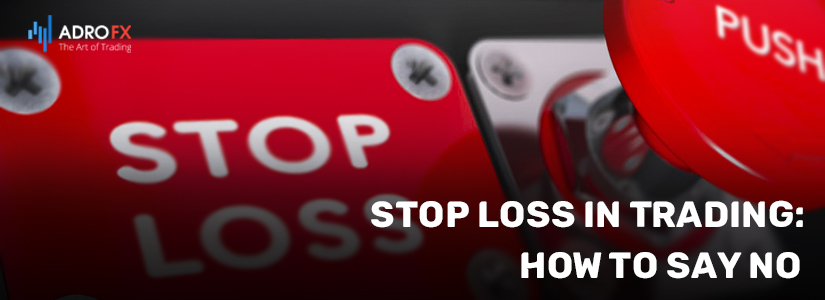Stop Loss in Trading: How to Say No

Almost all experienced traders of the forex market agree that it is necessary to set stop losses in any style of trading. Beginners, newcomers to the market, often neglect this rule, but with time they also come to understand it (or they simply stop trading because of the constant losses). Let's try to figure out why a Stop Loss is so important for successful trading and sustained profits.
Understanding Stop Loss in Trading
Basically, Stop Loss is a special type of order, which acts as a kind of limiter of trading losses due to the automatic closing of placed positions after the required price level is reached. For many traders, Stop Loss is one of the most important aspects of successful and profitable trading. It is difficult to disagree with this opinion if you know how badly trading ends up for beginners who ignore the importance of this option. By the way, to be sure of the effectiveness of the order, you can talk to experienced traders, who even after reaching incredible heights in trading, gaining experience and confidence in their abilities, still continue to work with Stop Losses.
If we consider a Stop Loss order from a technical point of view, it can be compared with an ordinary pending order, which is activated when the price reaches a predetermined value. The only difference between them is that in the case of the latter, a new trade is opened, rather than closing an existing one, as it happens with a Stop Loss. Undoubtedly, the main advantage of this tool is the automated closing of orders. It solves the problem of constant monitoring of open positions. Often it is the stop orders that allow for avoiding huge losses in situations when the market behaves not as expected.
Why Use Stop Loss in Trading
One well-known trading advice tells us that to let the profits grow, you simply have to cut the losses. Following such simple and unpretentious truth, quite a lot of traders have seen from personal experience how important it is to close unprofitable positions on time. Today, Stop Loss can be regarded as a sort of standard when it comes to "cutting" losses. In addition, the option is actively used in many trading strategies. Nevertheless, some traders completely deny the importance of this tool and neglect to use it at all. To support their beliefs, they cite examples when prices initially went against, thereby triggering Stop Losses, closing a losing trade, and then making a sharp U-turn and starting moving in the right direction.
Of course, such a standpoint and frustration can be understood, but such an argument is more about the skills of using the tool, the proximity of Stop Loss levels to the price or other important boundaries, as well as random events that do not characterize the systematic negative performance in any way. Given the volatility of the market, it is extremely difficult to predict what will happen in the future, whether there will be an opportunity to protect your position and not lose capital, and therefore, it is better to reinsure and use stops.

Benefits of Using Stop Loss
Unfortunately, beginner traders often join the minority and refuse to use Stop Losses. Most often, this is due to a fear of suffering a premature loss. Nevertheless, any doubts about the advisability of using a Stop Loss can be dispelled with the following advantages:
- Perhaps the main advantage that creates the foundation for almost any capital management strategy - is the ability to limit losses per trade. Thanks to the Stop Loss, we can set a clear value for the loss, which is laid down as a risk for a given position. Trading becomes flexible, and we save our account from excessive drawdowns;
- Ability to protect against force majeure. Traders who actively use the Stop Loss will confirm that this tool, at least once in their lives, saved their accounts from catastrophic losses when there were serious and fairly sharp fluctuations in the market. Often, opening an order in the right direction is only half the battle. It is necessary to insure oneself against unforeseen market situations in order not to lose. The cases when the market could fall by 50-100 points in a second are not at all uncommon;
- Given the ability to limit losses, stops automatically become return lockers. Here it is extremely important to see the difference with another standard tool, which is quite widely used in forex and the stock market, Take Profit.
The psychological factor also plays an important role. We believe many of you are familiar with situations when there is a deep drawdown on the account, and images of the financial apocalypse are raging in your mind. You must admit that at such moments you're ready to spend an eternity in front of your monitor, waiting if only the position will return from the negative zone and bring at least a few dollars of profit. However, your self-confidence does not solve the problem, and the situation keeps worsening.
Now you begin to blame yourself for not being able to close the order in time when the losses were not so great. Now you don't care at all about the profitability of the trade, you need to reduce its losses as much as possible. And so, instead of finally closing this unsuccessful position, you again start waiting for a new rise. And after all, to avoid these losses, nervous tension, and moral exhaustion, all that was needed was to use a Stop Loss.
Can You Trade Without Stop Loss
To understand the importance of using stop orders, to decide for yourself whether you need it or not, you need to understand why neglecting stops can drag your trades into drawdowns:
The first reason is the lost connection. Just imagine, the connection to the Internet suddenly lost, and it is at this moment on the market begins the activity you need. It is quite possible that after the connection is restored, your transaction will be in a huge drawdown;
The second reason is the development of the market situation, which does not play into the trader's hands. That is, when the trader sees that the trade was originally wrong, the Stop Loss automatically closes it, thereby eliminating the risk of losses.
The third reason is a refusal to set the Stop Loss due to ignorance of the moment of its closing. As a rule, in such cases, a position is closed due to hopelessness, and the amount of losses reaches 20-40%. In such an approach gain fixation takes place. That is, the trader tries to close all other orders where at least a minimum return has been received to at least somehow compensate for losses on the losing orders. As a result, it leads only to overstrain and new losses;
The fourth reason is the trader who does not have the Stop Loss set has to stay near the computer all the time to monitor the market conditions. It does not lead to anything good, except the wrong distribution of forces.

Why Are We Afraid to Accept Losses?
Many traders perceive a loss as a personal insult or a confirmation of their incompetence. Such an approach to losses not only causes a lot of stress but also affects the keeping of a trading diary. The fact is that we subconsciously put an equal sign between a trader's work journal and a school diary. When you received a "D" at school, you didn't want to give the diary to the teacher either. And vice versa - for sure you were careful to make sure the teacher didn't forget to put an "A" in it. But now there is no teacher, and no one will scold you for the "D" you got in the market. And the pattern of behavior is preserved, and the subconscious mind continues to cheat: if there is no "F" in the diary, then it is as if there is none at all, and there will be no punishment for it.
Conclusion
A losing position should be treated with full acceptance. Whatever happened, happened, and the past is irrevocable. All you can do is write down the trade in your trading diary, so you can analyze it later and draw conclusions. In any case, saving funds is much more important than denying the obvious or trying to prove something to the market.

About AdroFx
Established in 2018, AdroFx is known for its high technology and its ability to deliver high-quality brokerage services in more than 200 countries around the world. AdroFx makes every effort to keep its customers satisfied and to meet all the trading needs of any trader. With the five types of trading accounts, we have all it takes to fit any traders` needs and styles. The company provides access to 115+ trading instruments, including currencies, metals, stocks, and cryptocurrencies, which make it possible to make the most out of trading on the financial markets. Considering all the above, AdroFx is the perfect variant for anyone who doesn't settle for less than the best.









